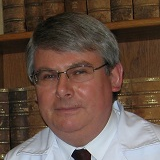Stereochemistry in Action
A special issue of Molecules (ISSN 1420-3049). This special issue belongs to the section "Organic Chemistry".
Deadline for manuscript submissions: closed (31 December 2019) | Viewed by 26559
Special Issue Editors
Interests: synthetic organic chemistry; stereochemistry; asymmetric synthesis; chemistry of natural products
Special Issue Information
Dear Colleagues,
Stereochemistry is an important area of chemistry which started with the fundamental contribution of Louis Pasteur in 1848, and in 1874, it acquired three-dimensional spatial characteristics with the hypothesis of Le Bel and vant’t Hoff. Another important landmark in the development of stereochemistry was set by Sir Derek Barton and Odd Hassel in 1950, through the introduction of conformational analysis, and in 1951 by Johannes Martin Bijvoet, with his study on anomalous X-ray scattering that allowed absolute configuration assignment. In later years, several phases of development were observed, being greatly accelerated by the emergence of modern instrumentation methods like nuclear resonance spectroscopy, circular dichroism, optical rotary dispersion, and X-ray crystallography. Soon after the thalidomide tragedy in the 1950s/1960s, it became obvious that stereodifferentiation in a living system is a general rule, not an exemption, which had enormous consequences for science. This therefore resulted in a significant increase in interest in dynamic stereochemistry, asymmetric synthesis, topicity and prostereoisomerism, as well as chemical topology and cyclostereoisomerism. Stereochemistry is no longer an isolated field of fundamental science and has become tightly linked with many branches of chemistry, medicinal chemistry, polimer science, new materials engineering, and many others. Over the last decades, an impressive development has been made in the area of stereocontrolled organic synthesis. Scientists now have a wide range of tools for effective optical activation, among them chiral catalysts or organocatalysts for the creation of the desired spatial arrangement of the molecule.
This Special Issue aimes to invite contributions on all aspects of organic stereochemistry, including its dynamic aspects studied by various physicochemical methods (X-ray, VT NMR, ECD, VCD, etc.) as well as being important in asymmetric synthesis.
Prof. Dr. Zbigniew Czarnocki
Dr. Joanna Szawkało
Guest Editors
Manuscript Submission Information
Manuscripts should be submitted online at www.mdpi.com by registering and logging in to this website. Once you are registered, click here to go to the submission form. Manuscripts can be submitted until the deadline. All submissions that pass pre-check are peer-reviewed. Accepted papers will be published continuously in the journal (as soon as accepted) and will be listed together on the special issue website. Research articles, review articles as well as short communications are invited. For planned papers, a title and short abstract (about 100 words) can be sent to the Editorial Office for announcement on this website.
Submitted manuscripts should not have been published previously, nor be under consideration for publication elsewhere (except conference proceedings papers). All manuscripts are thoroughly refereed through a single-blind peer-review process. A guide for authors and other relevant information for submission of manuscripts is available on the Instructions for Authors page. Molecules is an international peer-reviewed open access semimonthly journal published by MDPI.
Please visit the Instructions for Authors page before submitting a manuscript. The Article Processing Charge (APC) for publication in this open access journal is 2700 CHF (Swiss Francs). Submitted papers should be well formatted and use good English. Authors may use MDPI's English editing service prior to publication or during author revisions.
Keywords
- Absolute stereochemistry assignment of important molecules
- Dynamic stereochemistry
- Quantum-chemical modeling of transition states in the asymmetric synthesis
- Asymmetric transformations and optical activation
- Supramolecular stereochemistry (static and dynamic)
- Stereochemistry in polymer systems







